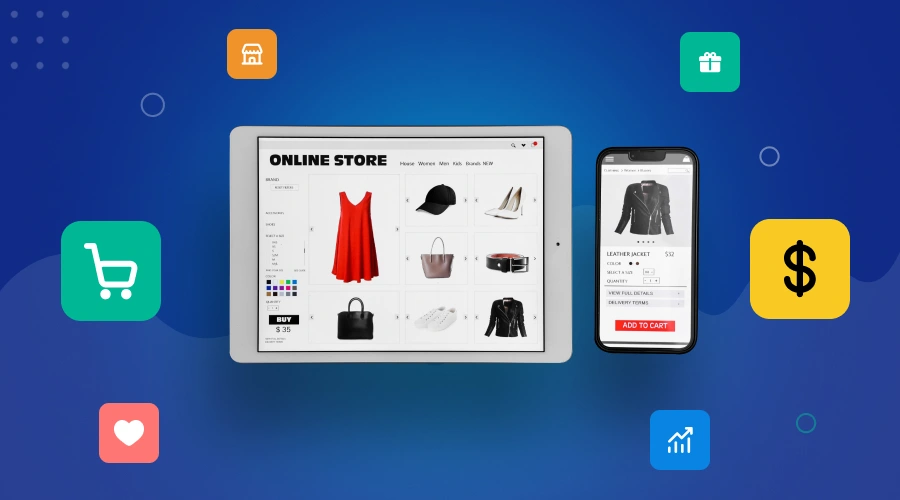A logo isn’t just a piece of artwork—it’s more than that! It’s the face of your brand. Over time, it has become the visual shorthand for what your business represents. However, today, when trends come and go, how can you be sure that your business logo will stand the test of time?
A timeless, custom logo not only reflects current aesthetics but also ensures longevity and maintains relevance and resilience in an ever-changing market. Unfortunately, not all logos are designed equal. So, how can you decide whether your logo stands the test of time or might fail to keep up with the times?
5 Signs Your Logo Might Not Be as Timeless as You Think
Logo is a mandatory thing that no business wants to skip. The right logo can make your brand; on the other hand, an inappropriate one can simply break your brand impression. Before you hire an efficient logo design company, let’s check what might affect your logo appeal and prevent it from being a timeless, iconic one.
Overly Trend-Driven Design
Design trends are ever-changing, and what might look stylish now could become obsolete in no time. Think back to the excessive use of color gradients and three-dimensional elements in logos a few years ago. Or the overly minimalistic flat designs that became popular shortly after? Sticking too rigidly to current design trends can result in your logo appearing old fashioned once the trend has moved on.
Trendy logos can often create the impression that a company is more concerned with appearing “in” than focusing on its core identity. Conversely, a logo that stands the test of time manages to combine contemporary appeal with a clean, classic look. It’s crucial to consider: does your logo lean heavily on the latest design trends, or does it embody a more enduring visual personality? If your logo is overly dependent on the latest design trends, it may not remain relevant for more than a couple of years.
Instruct your hired logo design agency to craft a design that reflects your brand’s essence rather than the latest design type. Try to opt for simplicity over gimmicks and create a logo that can adapt to minor updates without losing its core identity.
Too Much Complexity
A logo should convey your brand’s essence in the most straightforward and lucid manner. If it’s overly complicated, featuring intricate details, multiple colors, and hard-to-read fonts, it won’t be easily recognizable. Consider a few of the world’s most renowned logos—Nike, Apple, McDonald’s. They’re simple, unforgettable, and readily distinguishable at a glance.
A complicated logo tends to lose its appeal over time as it demands much effort from the viewer. With the reducing attention spans of consumers and the increasing volume of visual material we’re bombarded with, a logo that’s straightforward gains more importance. If your logo is hard to grasp or challenging to replicate across various mediums (such as digital screens, printed materials, or even embroidery), it may not last for a long time.
Try to maintain simplicity and clarity in your logo design. You should make sure that the logo looks pleasing in both color and black-and-white formats. Also, don’t forget to test it in small sizes and across different media to check if it remains properly recognizable.
Lack of Flexibility
In this digital age, a logo needs to function across a wide variety of platforms. From small social media profile pictures to giant billboards, a versatile logo can perfectly scale up or down without losing its quality or impact. If your logo looks good on your website but becomes distorted when resized for a business card, it’s a complete red flag!
A timeless logo needs to be flexible. It must perform effectively in both horizontal and vertical formats. If your logo is excessively intricate or too dependent on a specific form (for instance, a design that doesn’t adapt well to a square layout), it’s doubtful it will remain relevant as digital platforms continue to evolve.
Ensure your logo is versatile by testing it in various dimensions and shapes. Develop different versions that are suitable for full color, monochrome, and different designs. A logo that stands the test of time should perform just as well on a social media profile as it does on a large-scale billboard.
Misaligned with Your Brand’s Future Growth
When creating a logo, it’s crucial to consider not only your company’s present position but also its future direction. Numerous companies start with a specialized focus but later broaden their scope into different markets or product categories. If your logo is overly tied to your present products, it could lose its significance as your brand grows and changes.
For example, a logo that features a product that’s currently the main thing your brand is known for could hold your business back from growing or branching out in the future. If you start offering more things or change what you sell, a logo that’s too specific might not really capture what your brand is all about anymore. A perfect example of this is Starbucks. One of their previous logo versions showed a siren with the words “Starbucks Coffee” around it. But as they started selling stuff other than just coffee, they made their logo simpler by getting rid of the word “coffee,” which made it easier for the brand to move in different directions.
Neglecting Emotional Connection
At the end of the day, an excellent logo is more than just aesthetically pleasing—it’s about the emotional impact it has on people. Logo designs that stand the test of time forge a deep bond with their viewers. Consider the emotions stirred by the Coca-Cola logo or the confidence instilled by IBM’s visual identity. These logos strike a chord with their customers, strengthening their allegiance to the brand.
If your logo doesn’t connect with your audience on an emotional level, it may not achieve the longevity you desire. A design that appears detached, too robotic, or doesn’t convey your brand’s core principles could find it difficult to stay current as consumer tastes evolve.
Emphasize the emotional connection your logo creates. Make sure it not only has an appealing appearance but also mirrors your brand’s mission, values, and personality. Your logo should narrate a tale that strikes a chord with your intended market at a more profound level.
Conclusion
Even the most popular, timeless logos benefit from occasional tweaks. Think of it as a refresh rather than a complete overhaul. Leading companies such as Pepsi and Google have gradually updated their logos to stay current while keeping their fundamental essence. If your logo displays any of the following signs, it might not require a full redesign, but it could gain from a few small tweaks to adapt to current trends.
Your logo is a long-term investment in your brand’s identity. You should ensure that it stands the test of time. To achieve this, steer clear of designs that are too fleeting, keep things simple, make it adaptable, ensure it fits with what your brand aims to become, and build a logo that evolves with your company instead of turning into an outdated artifact.







